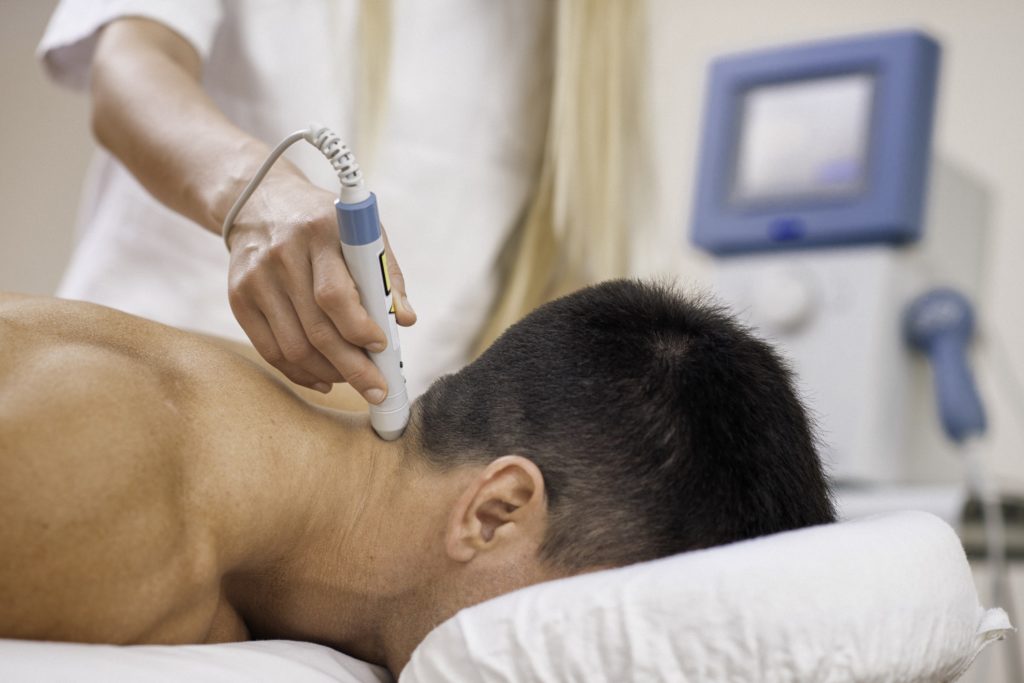On the brain disorder research horizon, leading experts in neuroscience and medical fields are making amazing discoveries daily. With the help of donations and fundraising efforts, powering forward into new territory regarding the diagnosis, treatment, and eventually cures for diseases that ravage the brain, researchers are striving to find faster, more effective treatments. One such clinical advancement is the use of LLLT therapy, or low-level laser therapy. While this type of therapy isn’t exactly new to the medical world, it’s use is becoming more prevalent and more widely accepted. Today, let’s take a look at what low-level laser therapy is, and how it can help those individuals living with a traumatic brain injury or brain disorder.
What is LLT Therapy?
We all know that UV rays from the sun are necessary for us but can also be harmful. We need it for our bodies to create vitamin D, but if exposed too long, the risk for cancer greatly increases. Exposure to too much UV can cause irreparable damage to our bodies. The way our bodies absorb these rays is through photoreceptors, light receptors in parts of the cell that are meant to absorb particles of light energy. This engages chemical, neurological, physical, and biochemical processes throughout the body. By using “cold” low-level lasers, the benefits of being out in the sunshine all day are concentrated and administered safely to the body. By using concentrated, high-energy beams of light from laser light generators, also known as diode lasers, medical professionals can target almost anywhere on the body to administer treatment. These lasers don’t heat up, so there is no damage to cells when contact is made.
Treating Brain Disorders With Lasers – How Does it Work and Who Can Benefit?
We mentioned that light laser type of therapy has been in use for quite some time. The benefits of this type of treatment have shown notable improvements in several case studies. In this published research from Connor Thunshelle and Michael R. Hamblin PhD from Harvard, Boston, MA, the use of LLLT, or photobiomodulation, was tested on mice first and later on patients living with a traumatic brain injury (TBI). The results show a decrease in inflammation, stimulation of neurogenesis, and even neuroprotection. But the results don’t just stop here – this type of light therapy has shown beneficial throughout the last several decades on a variety of individuals living with TBIs or brain disorders. Some of the disorders and diagnosis this type of therapy can help are as follows:
- Neurodegenerative diseases such as Parkinson’s and Alzheimer’s
- Developmental disorders such as autism, ADD and ADHD
- Sleep behavior disorders such as insomnia
- Brain injuries such as TBI, stroke or concussions
- Some pain syndromes
- Mood disorders
The list of benefits from LLLT therapy is a long one; improvements are achieved in: memory and learning ability, oxygenation due to better blood flow, tissue repair, cell communication, better pain management, reduction of inflammation, neuroplasticity, brain injury, and disorder recovery. LLLT therapy is helping bring a better quality of life to those inflicted with a variety of disorders and impairments.
Treatment times vary, but minimal sessions per area of the body are roughly 15 minutes on average. By encouraging tissue repair and decreasing inflammation, LLLT allows for healing using one of our body’s amazing mechanisms. Without the harm and risk from prolonged exposure to the sun, this type of therapy can be administered several times a week, in a non-invasive way, to maximize its benefits. Research programs like the NEUROPA project seek to further analyze and test the effectiveness of this type of treatment for further use in neurodegenerative disease.

Without the help of groundbreaking research and fundraising efforts from organizations like the United Brain Association, advancements in technology and associated disorder treatments are at risk of becoming stagnant. Through research and innovative technologies, we can improve the quality of life of those affected. To help find a cure and assist those already living with these disorders, we are eliminating obstacles in the way of helping create a better quality of life for those living with these impairments on a daily basis. Help us find a cure by donating today, and stay up to date on our news and articles by subscribing to our email newsletter now.
You Are Not Alone
For you or a loved one to be diagnosed with a brain or mental health-related illness or disorder is overwhelming, and leads to a quest for support and answers to important questions. UBA has built a safe, caring and compassionate community for you to share your journey, connect with others in similar situations, learn about breakthroughs, and to simply find comfort.

Make a Donation, Make a Difference
We have a close relationship with researchers working on an array of brain and mental health-related issues and disorders. We keep abreast with cutting-edge research projects and fund those with the greatest insight and promise. Please donate generously today; help make a difference for your loved ones, now and in their future.
The United Brain Association – No Mind Left Behind




